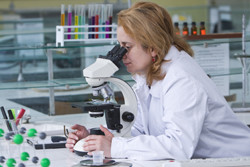'Reverse' evolution of parasites
EU-funded scientists took the Myxozoa, among the most extremely simplified parasites, as a model system to study developmental genetics for novel insight and enhanced understanding. The project 'Evolution and development in Myxozoa: body-plan simplification associated with endoparasitism' (MYXOZOA EVO DEVO) is the first detailed analysis of developmental processes in Myxozoa. It compared two closely related myxozoan species on the evolutionary branch represented by the Malacosporea. One has extremely simplified morphology evident as a large immotile sac lined with a single epithelial tissue layer. The other is worm-like with longitudinal muscle between two epithelial layers imparting the capacity for locomotion. Scientists carried out extensive field work to collect and culture infected host organisms. This allowed them to obtain the required tissue material containing RNA for generating transcriptomes (libraries of nearly all the genes expressed in an organism). Researchers exploited next-generation sequencing, an advanced method producing a greatly expanded range of sequences to study these non-model organisms. The organisms produced transcripts related to neurotransmission suggesting that, despite the lack of obvious nervous system structures, some form of neurotransmission likely occurs. The neurons, like the organisms as a whole, appear to have simplified structures compared to those of higher organisms. Most genes used by higher organisms for patterning of body-plan elements or body structures exist and are expressed, although at very low levels. Continued research should elucidate how they are used. Given recent evidence that myxozoans evolved from free-living cnidarians, it was also of interest to compare subcellular organelles in these two organisms. Scientists found highly significant similarities in proteins associated with myxozoan and cnidarian organelles thought to be homologous, supporting that hypothesis. The database will be made publicly available, serving as an invaluable resource for researchers in the field. Manuscripts are in preparation and results have already been presented at major international conferences. MYXOZOA EVO DEVO has made an important contribution to evolutionary developmental biology with enhanced insight into the evolution of parasitism in lower animals. In recognition, the team was invited by Springer Publishers to develop the first book ever on Myxozoa.







